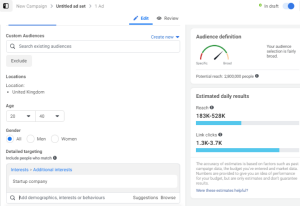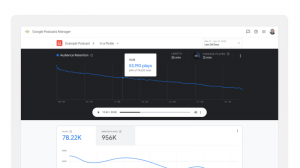
It’s just not worth calling yourself an entrepreneur if you can’t think through the relationship between revenues and profits. Willful ignorance on the part of lots of small business owners might just be the reason why they are caught up in this quandary. Entrepreneurs should ideally be concerned about how healthy their profit margins are because this will determine how much they get to keep.
While huge sales volumes look all impressive and grand therefore, if the corresponding profits are nothing to write home about then you might just as well start referring to yourself as a busy bee entrepreneur rather than a profitable one. The former type of entrepreneur have little going on for them and are typically the first to close shop as soon as things start going awry. The latter, on the other hand, are typically the types that keep growing their businesses from one level to the next. Here’s some of what you can do to grow your venture’s profitability:
Think Things Over From An Entrepreneurial Perspective
1. Set Goals For Your Business
As an entrepreneur it’s important to be candid with yourself; having a lovely vision statement for your startup is very nice but do you really intend to realize it? If you do then you must understand that getting there is going to be a journey riddled with all sorts of successes, challenges and setbacks.
Accordingly, it’s perhaps best to break down the journey into stages and think of each stage as a goal to be reached. Each goal reached must in turn result in the accomplishment of several objectives. Being able to visualize your step-by-step progression in this manner will enable you to focus on what needs to be done at every stage such that your efforts will not be haphazard hit and miss attempts but rather result-oriented actions.

2. Develop A Strategy For Each Goal’s Accomplishment
Having listed down the objectives to be achieved you should now think about the strategy that you’ll use to get to each stage and how this will be executed. It’s easy to confuse strategy with day-to-day business activities; perhaps the simplest way to distinguish the two is to realize that the former informs the latter. Strategy therefore tends to be constant but activities can be altered as deemed necessary. In terms of strategy therefore, some of the issues to consider may include the following:
- Your objectives for growth, sales and profitability
- Your current product/service offerings
- The products/services you wish to offer within a specified time in the future
- What you’ll need in order to sell these products/services
- How to compete against your competitors
- Competitor and industry trends
Now you should be able to decide on appropriate actions i.e. daily activities that will enable you to reach each goal.

Start Measuring The Numbers
3. Analyze And Improve Your Gross Profit Margin
Calculating your gross profit margin will help you to know how efficient your business is at product/service manufacturing and distribution. This way you are able to know how big a chunk of your profits is being lost to costs.
Formula: Gross Profit Margin = (Revenue – Cost of Goods Sold) / Revenue
For example, if last month you wrote and delivered 20 articles at $ 50 each your revenue was $ 1000. If each article cost you $ 18 to research and write, your cost of goods i.e. variable costs sold was $ 360. Using the formula:
Gross Profit Margin = (1000 – 360) / 1000 = 64%.
This implies that your freelance writing service is retaining 64% of each article’s sale as profit, a very healthy margin indeed. You certainly have enough money to cover all your expenses.
Gross profit margins tend to vary by industry though and are typically higher in service providing businesses than in manufacturing and retailing operations. For comparison purposes you can here check out the average gross profit margins across different industries.
Suggestions on how to improve gross profit margin:
- Raising your prices considerably, of course taking care not to price out your customers
- Start spending more on marketing high-margin products
- Finding a cheaper supplier
- Negotiating better rates with existing suppliers
- Cutting down on wastage during the production process
4. Analyze And Improve Return On Invested Capital (ROIC)
Your business should start being more effective at turning invested money, i.e. capital, into profits. Analyzing your ROIC will show you how well you are doing this.
Formula: ROIC = Net Income / (Long-Term Debt + Equity)
These figures can easily be found on your financial statements; net income on the P&L statement while the other two will be on the balance sheet.
For example, if your net income for the last year was $ 60000 and the sum of long-term debt and equity was $ 540000:
ROIC = $ 60000 / $ 540000 = 11.11%
Generally, a 15% or higher ROIC indicates healthy profitability, although this figure varies for different industries.
Suggestions for improving ROIC:
- Cutting down on expenses – not too much though because your business does need some necessary investment
- Increasing sales volumes
- Improving your sales mix by introducing more profitable products/services
- Paying down debt or returning money to investors
5. Analyze And Improve Your Overhead Ratio (O.R.)
The Gross Profit Margin formula above deals with variable costs. Likewise you have to analyze the impact of fixed costs i.e. fixed overheads.
Formula: Overhead Ratio = Operating Expenses / (Operating Income – Interest Income)
You’ll again need to refer to your P&L Statement for your operating expenses (those costs incurred that indirectly help to generate income and which include rent, utilities, sundries, etc.) and operating income. Check for interest income on the business’ bank account.
For example, if in the last year you had operating expenses of $ 300000, earned $ 260000 as operating income and had $ 8000 as interest income:
O.R. = 300000 / (260000 + 8000) = 1.119
This ratio is best analyzed in conjunction with GPM. If your business has a high GPM then your O.R. can be said to be sustainable because you have enough money left to cover other costs. On the other hand, a low GPM means that you need to lower your expenses.
Suggestions for improving O.R.:
- Cutting down on expenses – the trick is to determine which expenses the business can reduce and thrive better. You can, for example, opt to move into cheaper premises and thereby reduce rent expenses. This may be more advisable than, say, reducing the number of employees or reducing advertising spending.
6. Analyzing And Improving Asset Turnover
This calculation will help you to determine how well your business is using its assets to generate sales. It’s particularly relevant for entrepreneurs running low profit margin businesses e.g. retail outlets. Having several of these outlets however should result in high volume of sales overall.
Formula: Asset Turnover = Total Revenue / Total Assets
You’ll get total revenue on your P&L statement while the balance sheet will provide total assets (the sum total of property, inventory, equipment, etc).
For example, after earning total revenue of $ 1.2 million using assets totaling to $ 400000:
Asset Turnover = 1200000 / 400000 = 3
This analysis is again used in conjunction with the above ratios. A strong GPM means that your business is profitable.
It’s worth noting that this ratio doesn’t involve costs. Growth of sales volumes should therefore be your concern.
Suggestions for improving asset turnover:
- Encouraging your sales staff to meet higher targets
- Launching promotions, loyalty programs, etc
- Increasing advertising
- Undercutting competitors on price
- Improving production efficiency to ensure that your product gets to the market faster
Take care of business’ dynamics
7. Developing a cashflow strategy
It’s virtually impossible to run your small business without a steady flow of cash. Accordingly, you need to have an effective cashflow strategy in place to ensure that you’ll always have enough money to cater for your business’ financial obligations. Being in a stable cashflow situation means that you are in a position to optimally exploit all the profit-making opportunities available to your business.

8. Expanding into new markets
Entrepreneurship is about taking calculated risks. Venturing into a new market is obviously a risk-riddled proposition but if carefully managed it can prove to be a very rewarding endeavor for your small business.
Perhaps one of the best ways to go about this is to consider whether a potential opportunity can be profitably harnessed by adapting your current products or services. What this means is that your business will be able to tap into a new revenue stream at minimal cost thereby resulting in overall boosted profits.

9. Increasing lead generation and conversion
It’s simple, more customers equals more sales, and therefore increased opportunities to make more profits. To create more customers you’ll need to attract interested prospects first i.e. lead generation. These prospects must then be converted into paying customers i.e. lead conversion. The better you are at conversion, the more effective your sales efforts are, leading to increased profitability.
While it is essential to attract and convert as many prospects as possible, this should be done in a cost-effective manner thereby ensuring that only a minimal cost is incurred for each customer acquired. This consideration must therefore inform your preferred means of advertising and promotion. Nevertheless, one of the most effective ways to attract and covert prospects is via referrals from satisfied customers.
10. Increasing transaction frequency and size
You should make efforts to transact business with each of your customers as frequently as possible, effectively increasing your sales volumes and profits. Find ways to make sure that each customer buys more each time you are transacting business. The trick for effective up-selling, cross selling and diversifying is to ensure that you don’t come across as being too pushy.

11. Eliminating unprofitable products, services and activities
It doesn’t make sense to insist on offering a product or service whose sale doesn’t result in profits for your business. However attached you may be to such a product, service or activity you should realize that your insistence on offering it is practically a willful effort to gnaw away at your hard-earned profits. Provided that customer satisfaction won’t be compromised such offerings should be promptly discontinued.
12. Eliminating wastage throughout the business
Increasing profitability has everything to do with making your business optimally efficient and hence the need to reduce wastage to a bare minimum. There are many issues to consider in this regard including:
- Cutting down your power costs
- Ensuring that you are getting the best deals from your suppliers
- Ensuring that you are not paying for unused services
- Ensuring that space is being optimally utilized
- Ensuring that your current location/premises (and rental expenses) is the most cost-effective option for your business

(44)









